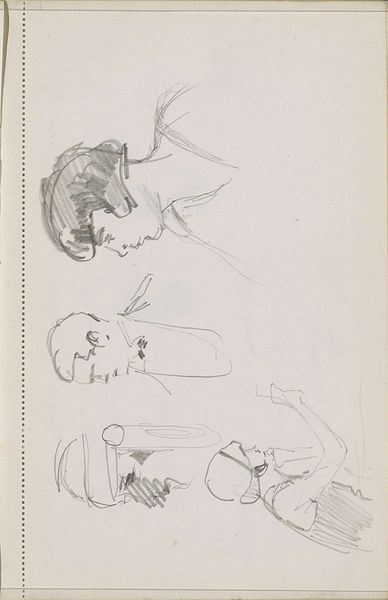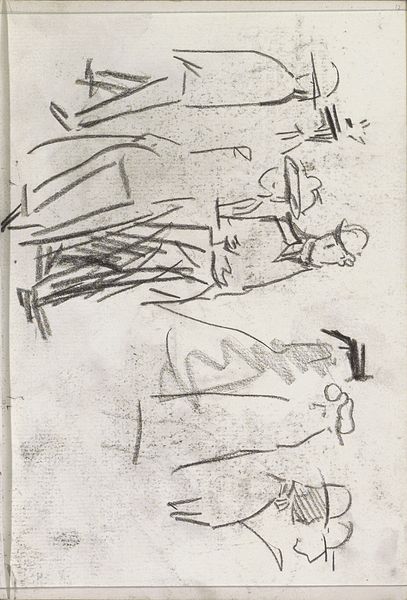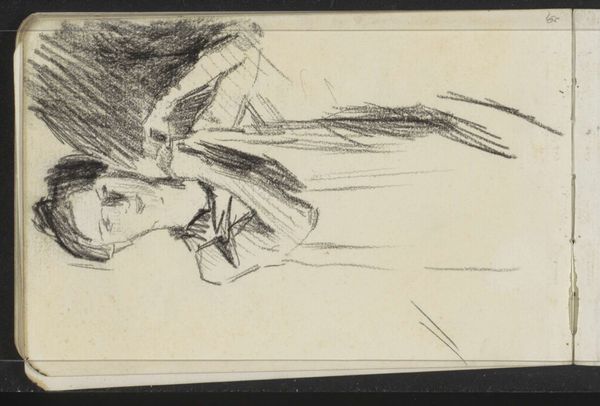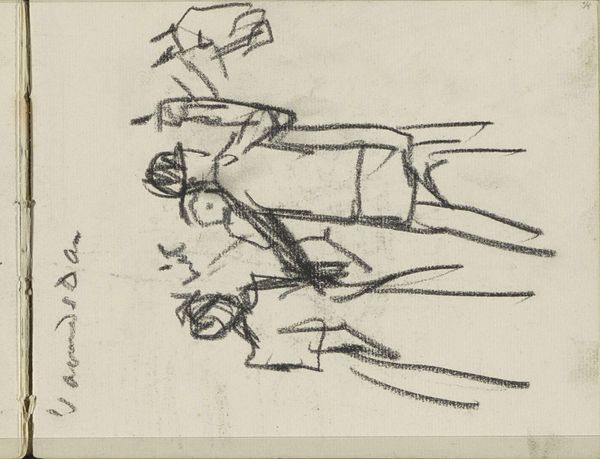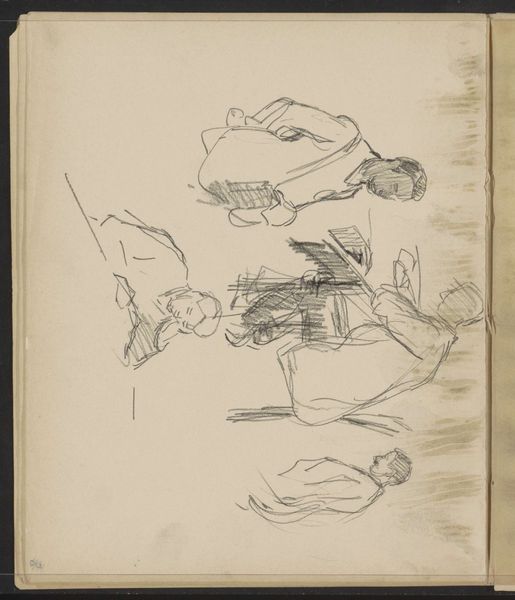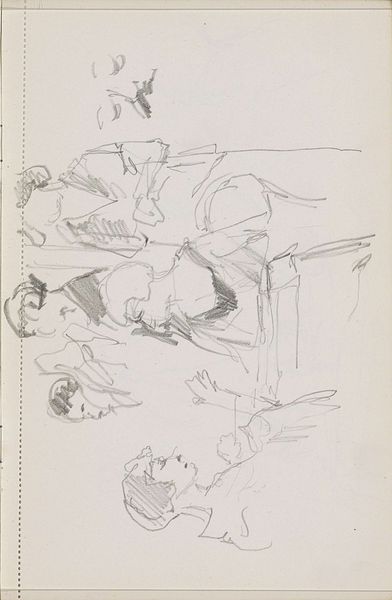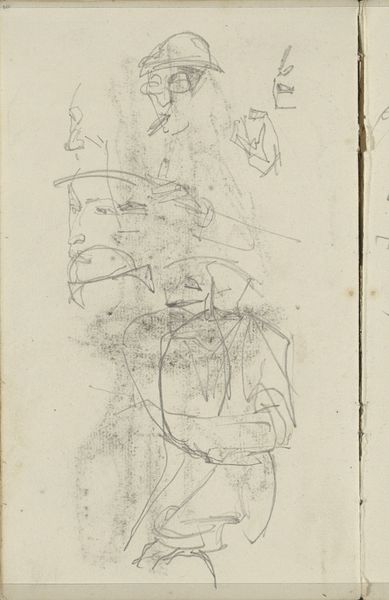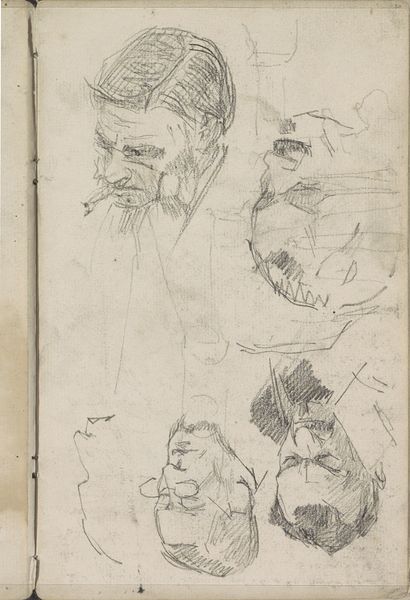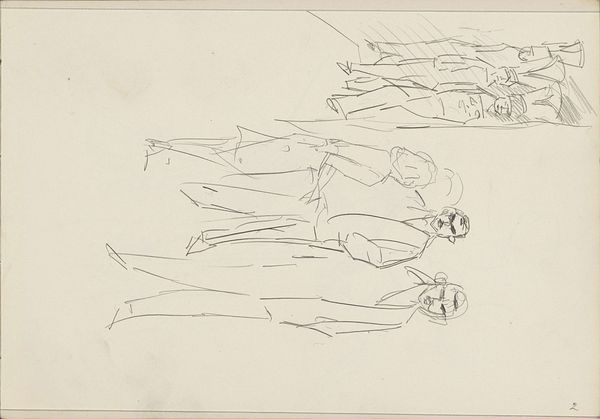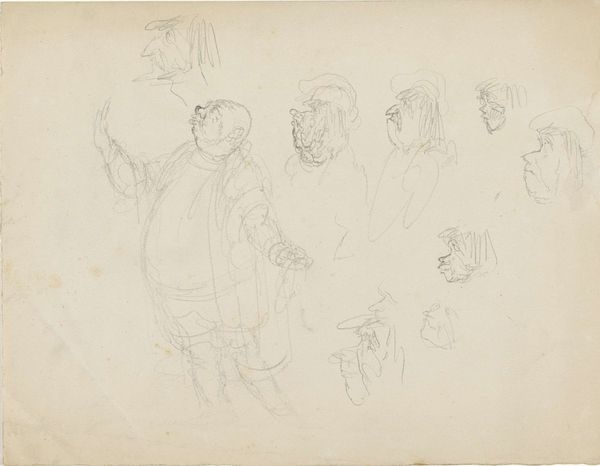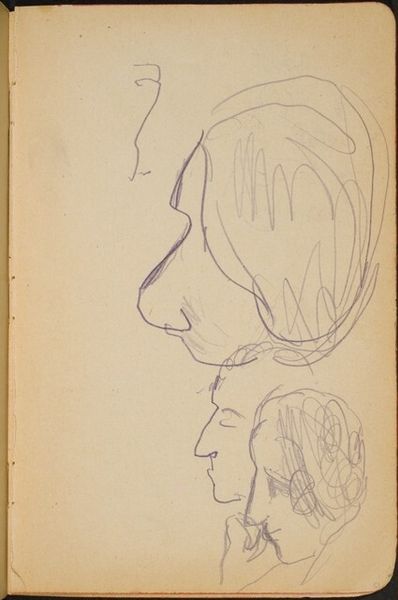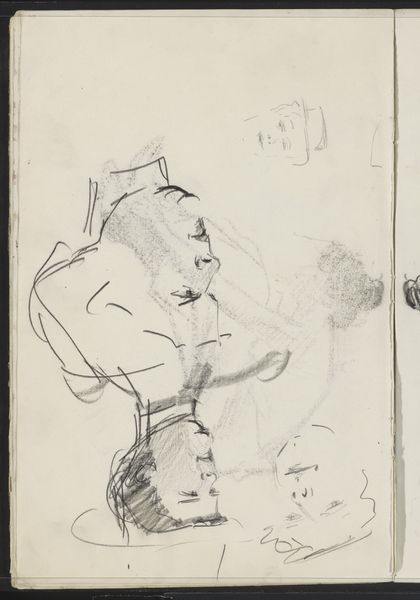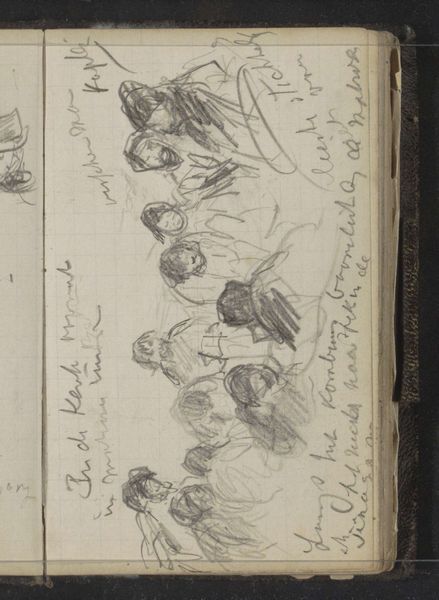
Copyright: Rijks Museum: Open Domain
Curator: Here we have Isaac Israels' "Figuurstudies," a drawing created sometime between 1886 and 1934, residing here at the Rijksmuseum. It’s fascinating to see the artist's hand at work in such an informal manner. Editor: Yes, my immediate reaction is that this has a sense of immediacy and rawness. The stark lines almost scratch the surface, really highlighting the physicality of the medium. Curator: Precisely. These are, essentially, quick sketches, likely studies for larger pieces. What I find particularly compelling is how this gives us access to Israels’s working methods. We are privy to the generative stages of artistic creation, a process that is rarely available for viewing. Editor: Right, and look at the variety of lines and pressure. You can almost feel the artist trying to capture a fleeting gesture, quickly laying down marks and re-evaluating. It strips away the facade of the finished piece. I see so much evidence of process here. I wonder what type of pencil or graphite he employed? Curator: It reflects the broader shift towards impressionism and its emphasis on capturing the transient moment. Away from academic strictures towards documenting everyday life—what one might term the pulse of modern society. This unedited quality mirrors the aesthetic values of the movement, celebrating the authentic, unfinished quality. Editor: Agreed. I think that's especially clear in the composition. The way these figures seem to overlap feels very informal. It has that spontaneous feel—almost as if the artist just started drawing without any prior notion of formal balance or, frankly, any concerns about material preciousness. These types of preliminary sketches can show artistic exploration beyond purely financial value or societal norms. Curator: Yes, a raw exploration of form and the human condition within its own historical moment. Seeing this as a window into a creative, generative practice brings a new layer to interpreting Israels' finished work. Editor: Definitely, seeing the bones of the work highlights how much art comes down to simply engaging with a material, grappling with translating ideas. I look at it now with newfound insight.
Comments
No comments
Be the first to comment and join the conversation on the ultimate creative platform.
